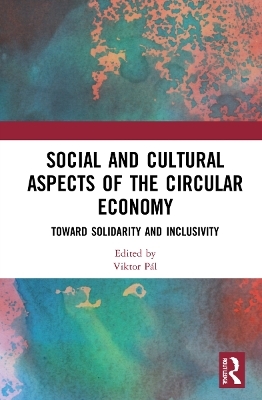
Social and Cultural Aspects of the Circular Economy
Routledge (Verlag)
978-1-032-18580-4 (ISBN)
This collection of essays brings together discussions arguing that the circular economy must be linked to society and culture in order to create a viable concept for remodelling the economy. Covering a diverse range of topics and regions, including cities and living, food and human waste, packaging and law, fashion, design and art, this book provides a multi-layered examination of circularity.
Transitioning to a circular economy, reducing resource input and waste, and narrowing material and energy loops are becoming an increasingly important targets to combat decades of unsustainable models of consumption. However, they will require a significant shift in social and cultural thinking and these dimensions have not yet been factored into policy debates and frameworks. While recognising the key role of individual consumers and their behaviours, the book goes beyond this singular perspective to provide equal focus on institutional and political structures as necessary drivers for real change.
Social and Cultural Aspects of the Circular Economy argues for a social and solidarity economy (SSE) to combine individual actions with a wider cultural shift. It will be an important read for scholars, researchers, students and policy-makers in the circular economy, waste studies, consumption and other environmentally focused social sciences.
Viktor Pál is a Researcher at the Department of Cultures at the University of Helsinki, Finland and has the title of Docent at the University of Tampere, Finland. He also serves as Coordinator at the Helsinki Environmental Humanities Hub.
1. Introduction: Social and cultural aspects of circular economy 2. Transitioning to the circular economy: Shifting from a technical to a cultural perspective 3. Filling the social gap in the circular economy: How can the solidarity economy contribute to urban circularity? 4. Towards a socially inclusive circular economy: A study of tenant engagement in European social housing organisations 5. How does the circular economy interact with urban food system transformation? 6. Human waste: Why what seems naturally circular frequently is not 7. Power and responsibility in transition to sustainable food packaging 8. Throwaway culture and the circular economy: Lifespan concepts in regulation 9. Assessing through a gender-inclusion lens the social impact of circular strategies in the apparel value chain: The Dutch case 10. From global problem to local solution: How a future directed circular economy can foster social change 11. Contemporary art and cosmovisions of Brazilian Indigenous peoples: Potential influence on CE and SSE practices? 12. Beyond circularity: Do we need to shrink and share?
| Erscheinungsdatum | 23.05.2022 |
|---|---|
| Zusatzinfo | 15 Tables, black and white; 9 Line drawings, black and white; 2 Halftones, black and white; 11 Illustrations, black and white |
| Verlagsort | London |
| Sprache | englisch |
| Maße | 156 x 234 mm |
| Gewicht | 485 g |
| Themenwelt | Kunst / Musik / Theater |
| Geisteswissenschaften ► Philosophie ► Ethik | |
| Naturwissenschaften ► Biologie ► Ökologie / Naturschutz | |
| Sozialwissenschaften | |
| Technik ► Umwelttechnik / Biotechnologie | |
| Wirtschaft ► Volkswirtschaftslehre | |
| ISBN-10 | 1-032-18580-5 / 1032185805 |
| ISBN-13 | 978-1-032-18580-4 / 9781032185804 |
| Zustand | Neuware |
| Haben Sie eine Frage zum Produkt? |
aus dem Bereich


